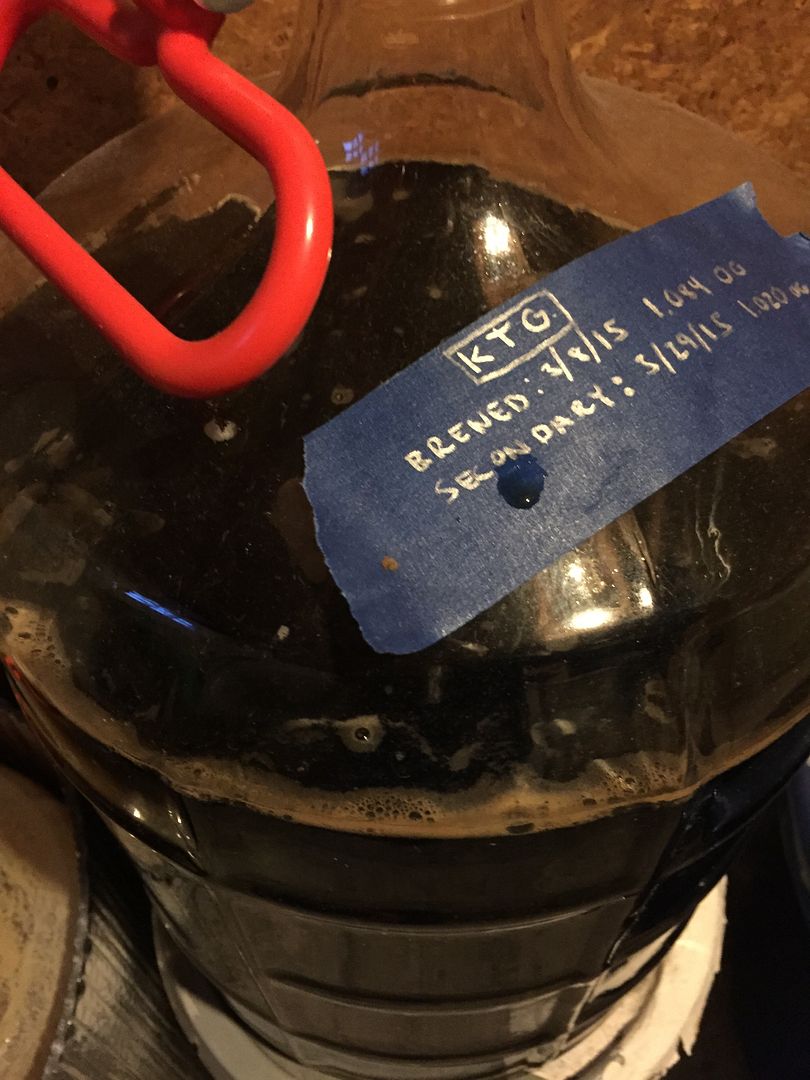SHvanBommel
Well-Known Member
- Joined
- Nov 5, 2007
- Messages
- 548
- Reaction score
- 57
BORK BORK BORK.
I have had this beer many times from PBREW (Portsmouth Brewery) before it became a beer advocate b0rgy (beer orgy) and can safely say it is one of my absolute favorites. I had asked Todd several times in the past if he would be willing to share the recipe... not happening.
So imagine my surprise when I find this recipe here... Well, I sauntered off (yes, sauntered) to my LHBS and got all the ingredients (I think it came to 80.~) got home, drew 800ml from a yeast cake of an IPA I had just done (WLP001) and started planning my brew day. The one thing i didn't do was calc my water right. surprised? No, me neither. I should briefly mention that this was the second brew on my new rig so; all sorts of new things happening. So anyway, long story short, I end up with about 8.5 Gallons of 1.060 wort! Imagine that! This was after doing a 120 minute boil, hoping to boil off enough to hit the original 1.104 Gravity in the recipe. Yes, yes my efficiency was shot. i know. i got it. but! If i had boiled down to the 5.5 Gallons I was shooting for I would have hit it right on the nose! (silver lining moment). Well to hell with that. So, I ended up splitting the batch into a 5Gal bucket and a second 5 Gal bucket, split my pitch (At this point 1L of nothing but yeast.) and went back to the LHBS and got enough Dark LME (7 lbs i think) to spike the 5gallon portion to the 1.104 gravity. Win? yes. Double win = I fermented out the additional 3.5 gallons per usual, egged, carbed. and now while i've already added my port soaked oak and the KTG clone is aging, I'm enjoying this wonderful stout. By wonderful I mean it has all the character of the original minus the alcohol, the oak character, and the port notes. That's ok. The flavor and color are of strong coffee and chocolate. As the beer warms in the glass the lacing is wonderful, the chocolate warms the stomach, there is a slight chewiness which is very attractive to me and the hops are mild but present. Good 'nough? Really wonderful brew, I would probably brew this as a 10 gallon batch to keep this on tap regularly and do a 5 gallon batch once a year.
So good.
So. so. good.
I have had this beer many times from PBREW (Portsmouth Brewery) before it became a beer advocate b0rgy (beer orgy) and can safely say it is one of my absolute favorites. I had asked Todd several times in the past if he would be willing to share the recipe... not happening.
So imagine my surprise when I find this recipe here... Well, I sauntered off (yes, sauntered) to my LHBS and got all the ingredients (I think it came to 80.~) got home, drew 800ml from a yeast cake of an IPA I had just done (WLP001) and started planning my brew day. The one thing i didn't do was calc my water right. surprised? No, me neither. I should briefly mention that this was the second brew on my new rig so; all sorts of new things happening. So anyway, long story short, I end up with about 8.5 Gallons of 1.060 wort! Imagine that! This was after doing a 120 minute boil, hoping to boil off enough to hit the original 1.104 Gravity in the recipe. Yes, yes my efficiency was shot. i know. i got it. but! If i had boiled down to the 5.5 Gallons I was shooting for I would have hit it right on the nose! (silver lining moment). Well to hell with that. So, I ended up splitting the batch into a 5Gal bucket and a second 5 Gal bucket, split my pitch (At this point 1L of nothing but yeast.) and went back to the LHBS and got enough Dark LME (7 lbs i think) to spike the 5gallon portion to the 1.104 gravity. Win? yes. Double win = I fermented out the additional 3.5 gallons per usual, egged, carbed. and now while i've already added my port soaked oak and the KTG clone is aging, I'm enjoying this wonderful stout. By wonderful I mean it has all the character of the original minus the alcohol, the oak character, and the port notes. That's ok. The flavor and color are of strong coffee and chocolate. As the beer warms in the glass the lacing is wonderful, the chocolate warms the stomach, there is a slight chewiness which is very attractive to me and the hops are mild but present. Good 'nough? Really wonderful brew, I would probably brew this as a 10 gallon batch to keep this on tap regularly and do a 5 gallon batch once a year.
So good.
So. so. good.





